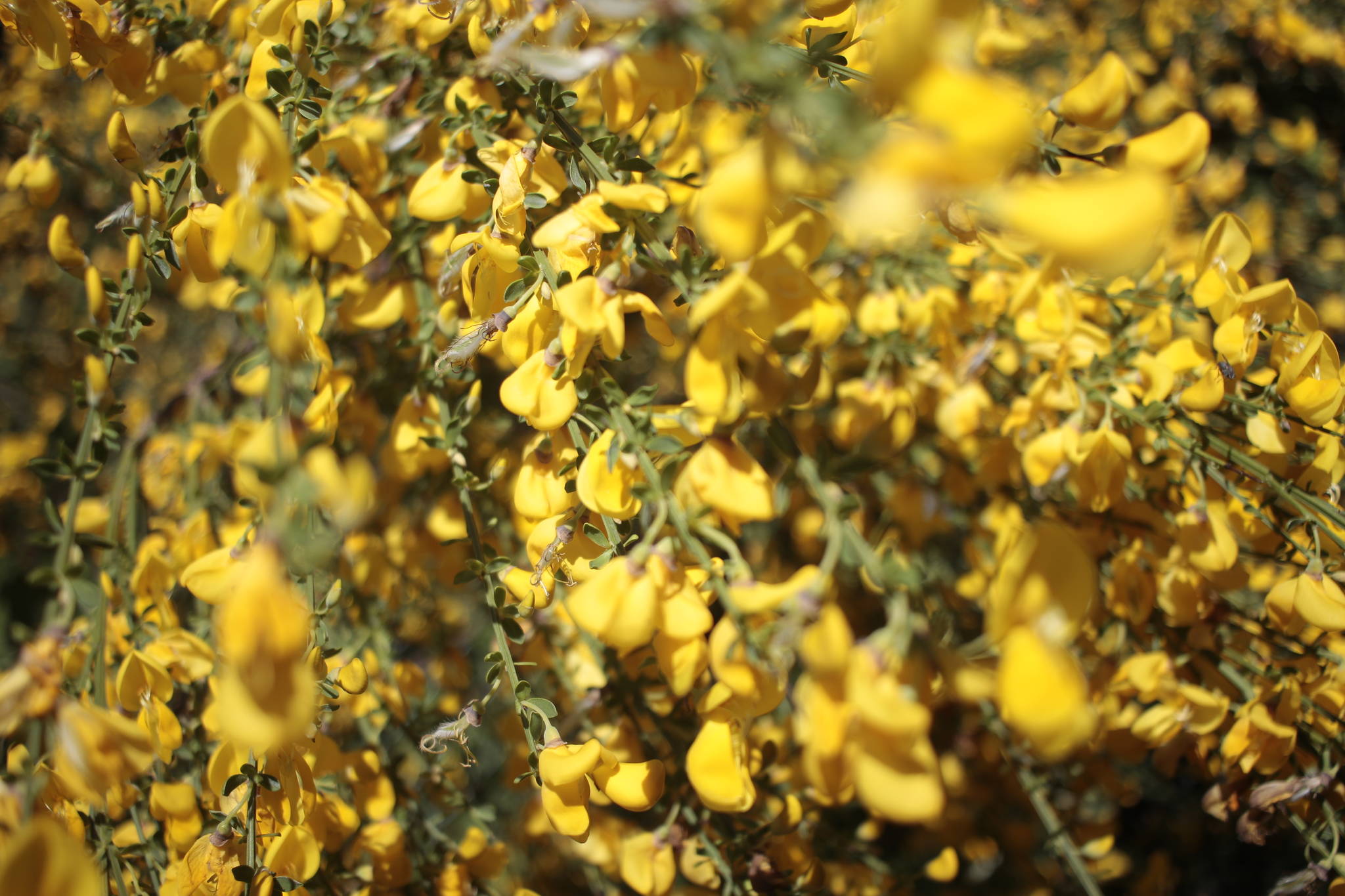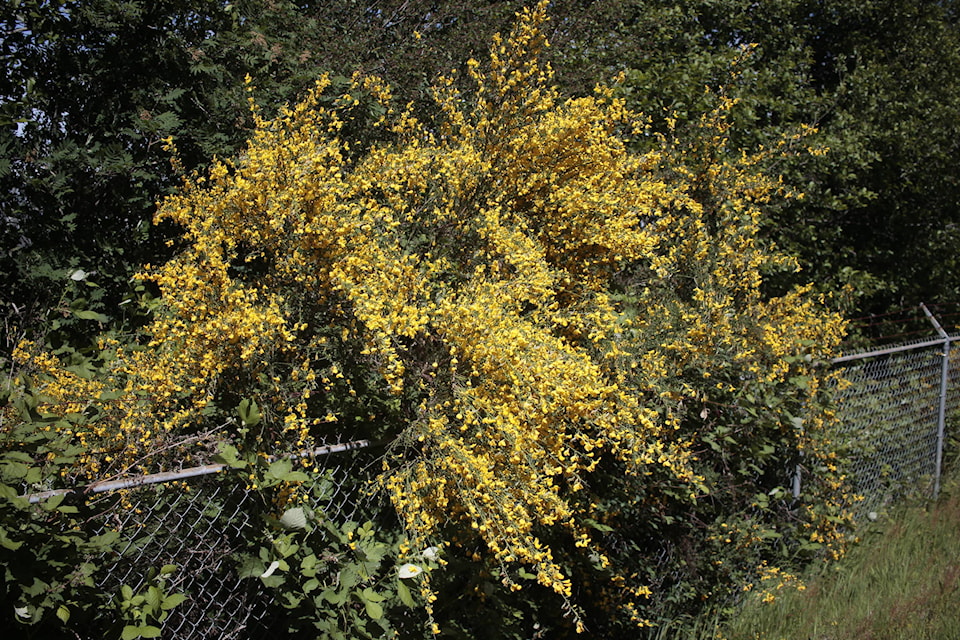It is hard to miss these days – empty lots, ditches and property edges are all bursting with yellow flowers.
Scotch Broom is an escaped ornamental flower that particularly likes the environment of southern and central Vancouver Island.
The plant is distinctive for its yellow flowers, and typically blooms in the spring after periods of rain. According to the Invasive Species Council of B.C., “broom” spreads both by seed and by lateral budding. Mature plants can produce up to 3,500 seed pods, each with 5-12 seeds. It spreads on light-dominated and disturbed areas.
And the ongoing battle to keep it in check has been complicated this year by the pandemic.
RELATED: Beekeepers in Nanaimo watching out for what are now being called ‘murder hornets’
Broom is an invasive plant that spreads rapidly and forces out native plants. It reduces biodiversity and prevents forest re-growth. It can cause allergies and be toxic to grazing animals. It is flammable and changes soil chemistry. The plant was first brought to Vancouver Island in 1850 and has spread across the Pacific Northwest. A single plant can produce up to 18,000 seeds that remain viable in the soil for several decades.
According to Campbell River-based Greenways Land Trust habitat management coordinator Camille Andrews, broom “outcompetes native vegetation and reduces the diversity of the area. In an area where you had a whole bunch of different plants growing, it is a single kind of plant that only benefits a few kinds of wildlife.”
The time of the year when the plants produce flowers is a key time to go on the offensive. For one thing, they are impossible to miss, but the real reason is that taking them out while flowering leaves the root system vulnerable, making the plant easier to destroy.
“The energy is in the flower,” says Comox Valley Broombusters organizer Bev Agur.
With pandemic restrictions in place now, Agur is relying on people who have already volunteered and know how the cut out the plant. Now is not the time to show new recruits, as Agur says she would need to demonstrate how to cut the plant up close.
“This year, we pretty much relied on our volunteers from the past,” she says.
This is instead of events or regular organized cuts. Agur has told the volunteers to get their tools and head out to remove the broom and keep her posted about their efforts.
Campbell River volunteers are facing a similar challenge.
RELATED: Invasive crab spotted near Sooke
Greenways, contractors, city workers and volunteers regularly hold events to combat the spread of broom. May 9 would have been Greenways’ annual Broom Bash event in the Campbell River Estuary, but this and similar events have been largely cancelled.
Greenways is fighting through that by encouraging people to cut broom while it is blooming using social distance techniques.
“We’re still inviting volunteers to go out with their own family unit or household and work on it on their own,” said Andrews. “We’re offering to provide them with clean tools and we’re going out to pick up the material afterwards.”
When it is cut in bloom, broom can be left on-site with no special precautions, since it does not have any seeds in the flower stage.
Broombusters has been working on broom eradication in Campbell River since 2012, when it started working on two projects on the south end of the city along Jubilee Parkway and Dogwood.
“Each project took about four years apiece in the broom growing season to get it to suppress long enough to finally kill off the roots,” said Campbelli River Broombusters organizer Morgan Ostler. “We’ve had a large number of people and have had a really great time through those years carrying broom. It gives a great sense of satisfaction when we see the results of the years of work.”
RELATED: COVID-19 restrictions may aid B.C.’s ongoing battle against invasive mussels
Campbell River landowners are required through a bylaw to cut broom on their properties. The bylaw, which was enacted in 2019, includes a penalty of thousands of dollars and was the first of its kind on Vancouver Island.
Broombusters started in 2006 and is made up entirely of volunteers. There are branches throughout Vancouver Island. For more information on a chapter near you, check the organization’s website.
For more news from the Island and beyond delivered directly to your email inbox, click here.

